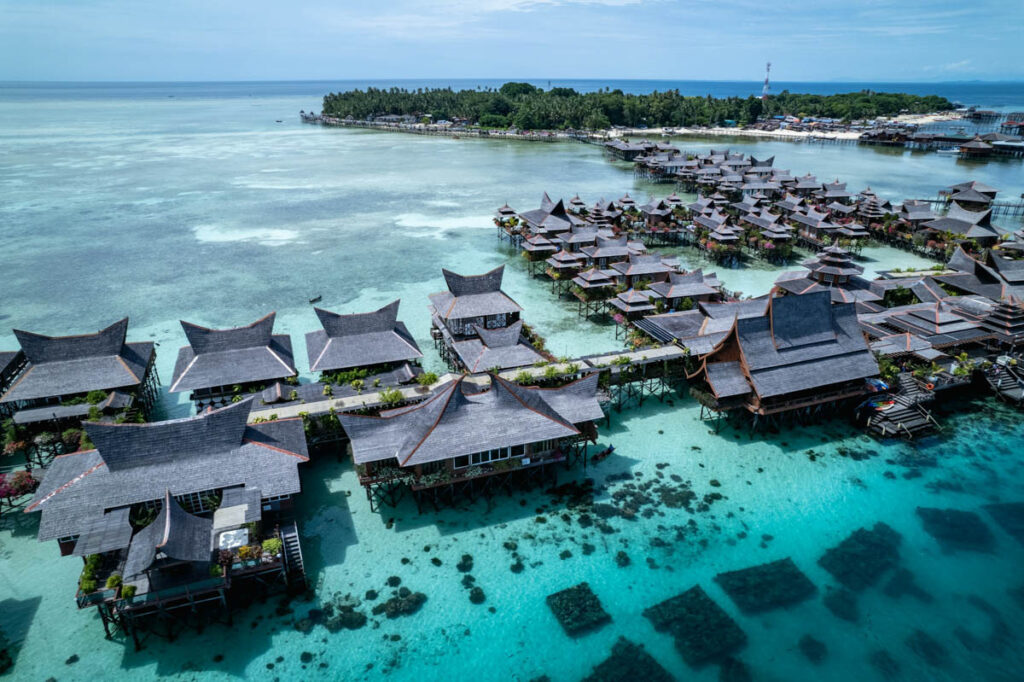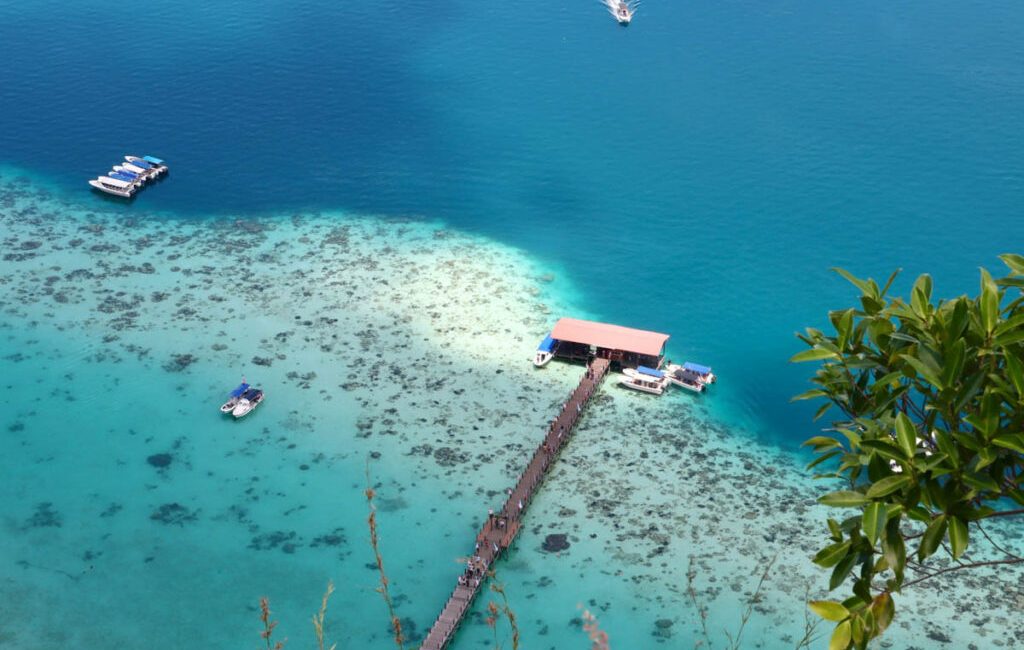Few destinations in Asia blend such diversity, accessibility and underwater beauty as Malaysia. From the emerald reefs of the Perhentian Islands to the deep blue walls of Sipadan, this tropical nation is a meeting point of biodiversity, culture and adventure. Sitting at the heart of the Coral Triangle, Malaysia offers some of the most nutrient-rich waters in the Indo-Pacific, a playground for reef fish, turtles and divers who crave both serenity and spectacle.
For years, Malaysia’s dive scene has existed just under the radar of mainstream travel media. Yet those who have descended into its waters know that few places deliver this balance of marine life, accessibility and soul.
Why Divers Keep Returning
Biodiversity Beyond Compare
The seas surrounding Malaysia teem with life. Around Sipadan Island, barracuda swirl in silver tornadoes while turtles drift lazily through coral gardens that drop into cobalt-blue depths. Just a short hop away, the muck dives of Mabul and Kapalai reveal a different world entirely, where ornate ghost pipefish, flamboyant cuttlefish and nudibranchs parade across the sand.
Malaysia’s range is extraordinary. Big-fish encounters in open ocean, quiet reef dives for beginners and night dives alive with bioluminescence all coexist within the same archipelago. In Sabah, you can dive world-famous islands one day and untouched atolls the next.

Photo by Ernests Vaga on Unsplash
Easy to Reach, Hard to Forget
Malaysia’s infrastructure makes diving refreshingly accessible. International travellers usually fly into Kuala Lumpur, then connect to Kota Kinabalu or Tawau for access to Borneo’s top dive sites. On the peninsula’s east coast, short domestic flights or ferry crossings link to Tioman, Redang and the Perhentian Islands, each surrounded by marine parks designed to protect the reefs.
Permits are required for sensitive zones such as Sipadan, but most dive resorts handle applications as part of their packages. That small administrative step ensures the reefs remain pristine, a testament to Malaysia’s growing reputation for conservation-minded tourism.
The Great Divide: Borneo and Peninsular Malaysia
Sabah and the Borneo Islands
If Malaysia were a symphony, Sabah would be its crescendo. The coral walls of Sipadan have become almost mythical among divers. Rising from the deep Celebes Sea, the island is surrounded by plunging drop-offs and swirling fish schools. Giant trevallies flash silver in the current while green and hawksbill turtles rest among gorgonian fans.
Nearby Mabul and Kapalai offer an entirely different tempo. Their shallow reefs and sandy slopes make them ideal for photographers chasing macro life such as seahorses, frogfish and rare crustaceans hidden in coral rubble. A short flight away, the remote atoll of Layang-Layang rises like a fortress from the South China Sea, famous for hammerhead sightings between April and June. For those seeking tranquillity, Lankayan Island north of Sandakan combines powder-soft beaches with surprisingly rich coral reefs.
The East Coast Islands of Peninsular Malaysia
Across the South China Sea, the peninsula’s east coast paints a more relaxed picture of tropical diving. Tioman Island has long been the training ground for new divers, with calm seas, clear water and coral gardens alive with reef fish. Nearby Redang and Lang Tengah attract those seeking colourful reefs and laid-back island life. Further north, the Perhentian Islands offer warm, shallow lagoons perfect for beginners, alongside wrecks and deeper pinnacles that keep advanced divers entertained.
For something quieter, Tenggol Island delivers dramatic underwater topography and drift dives that feel more remote than its proximity to the mainland suggests. Even Payar Island, near Langkawi, provides an easy marine park experience for travellers seeking a quick reef escape.
What It’s Like Beneath the Waves
Visibility is typically generous, ranging between 15 and 30 metres in many regions. In Borneo, currents around sites such as Sipadan can be swift, adding a thrill to drift dives, while the peninsular east coast tends to offer calmer, more predictable conditions.
Water temperatures hover around 27 to 30°C, so a 3 mm wetsuit is usually plenty. Night dives reveal another dimension entirely, with basket stars unfurling, hunting cuttlefish gliding in the dark and corals glowing under torchlight.
While diving is possible year-round in much of Sabah, the peninsular east coast follows a clearer rhythm. Resorts there generally open from March through October, when seas are calm and skies bright, closing during the monsoon months to let the reefs rest.
Planning Your Malaysian Dive Trip
Getting to your chosen region is straightforward. Most divers connect through Kuala Lumpur, with domestic flights on to Sabah or the east-coast islands. From Tawau, overland transfers take you to Semporna, where boats await for the journey to Mabul, Kapalai or Sipadan.
Resorts typically include accommodation, meals and guided dives in one package. For high-demand locations, especially Sipadan, booking months ahead is recommended since daily visitor numbers are limited. Dive centres are well-equipped, offering gear rental, air or nitrox fills and courses from beginner to professional level.
Why Choose Malaysia
Divers often describe Malaysia as many worlds in one country. You can experience open-ocean pelagic dives, macro photography heaven and gentle coral gardens without crossing borders. The atmosphere is easygoing, the hospitality warm and the cost, compared with nearby giants such as Indonesia or the Maldives, remarkably fair for the quality of diving on offer.
Add to that the topside diversity: steamy rainforests, incredible food and the blend of Malay, Chinese and Indigenous cultures that make each island community distinct. Few destinations offer such an elegant mix of marine adventure and cultural depth.
Final Thoughts
Whether it’s your first time donning fins or your thousandth descent, Malaysia deserves a place on your dive map. Between the coral-streaked walls of Sipadan and the turquoise shallows of Tioman, this is a destination that rewards curiosity. Each dive reveals another layer, a flash of colour, a hidden creature and a reminder of how alive the sea can be.
If diving is about discovery, Malaysia is where that feeling still thrives.
Find Travel Deals to Malaysia
All products featured here are independently selected by our editors and writers. If you buy something through links on our site, The Scuba News may earn a small commission, but this does not affect the price you pay. Any prices included are correct at time of publication.
THE SCUBA NEWS Link !
DemirHindiSG 24 Ekim 2025-22:32







